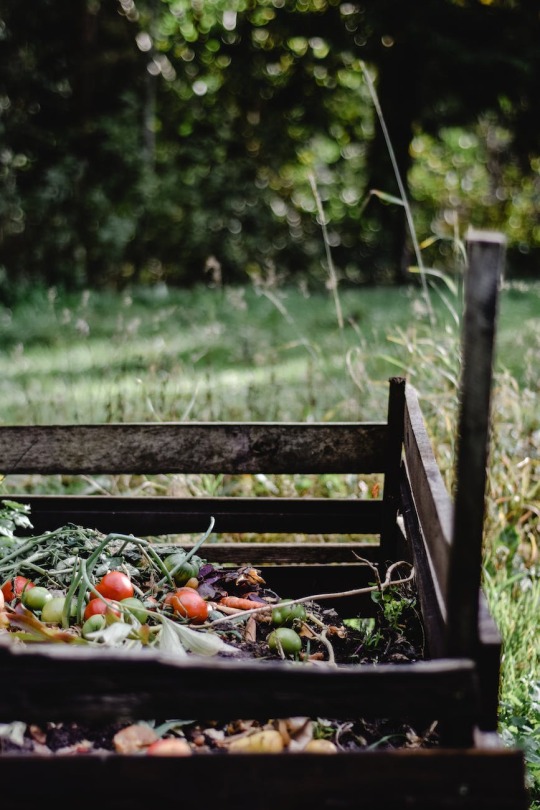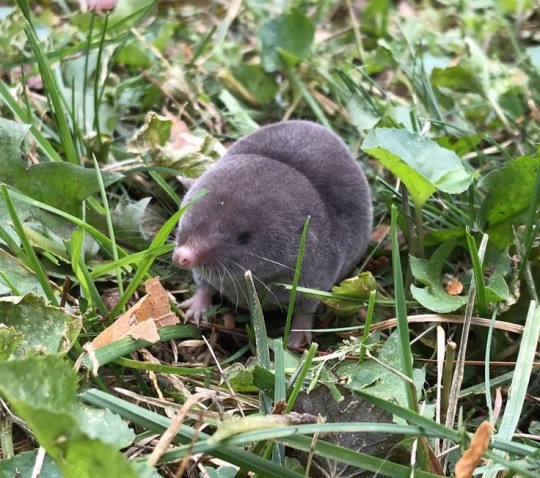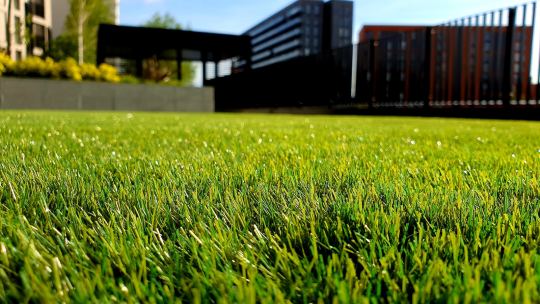#Soil Aeration
Explore tagged Tumblr posts
Link
Discover how to maximize growth potential with 2 inch net pots for more vibrant and flourishing plants.
0 notes
Text
#Spring Clean Garden#Spring cleaning#Spring Garden Cleaning#Garden Cleaning#Garden Cleaning Service#Spring Season#Cleaning Service Sydney#Cleaning Service#Seasonal Expertise#Pest and Disease Management#fertilization#Soil Aeration#Seed Sowing#Spring Cleaning Expert#Professional Cleaning#Dirt2Neat
0 notes
Text



A "garden item", some uranium buttons and uranium glass from some antique stores in Regina.
#thrifting#shiftythrifting#submission#looks like some kind of soil aerator?#had the inexplicable urge to put the uranium buttons in my mouth and just. hold them there#uranium glass#don't make us get the shifty geiger counter out we see you#objects#buttons#housewares
321 notes
·
View notes
Text
i will kill all idiots who think wildflower patches are like. Every Wild Beast Who I Hate Habitat. there are fleas and ticks in your lawn too. there are MORE TICKS in places with less mammals coming through (deer, squirrels, etc that the ticks can feed on instead of u) and insecticides/herbicides kill off beneficial insects so there’s more habitat for ticks to hang around. and if you aren’t attracting birds with seed or WILDFLOWERS THAT NATURALLY MAKE SEED FOR BIRDS then you will have MORE pests.
people are just so stupid instead of planting things to attract bugs and birds they WANT that will do bad insect management they just keep going down the line of killing everything and making uninhabitable space. but ig its “safer for kids” (your kids will just get sick from playing in roundup!!!) or you wont have to see a fucking garter snake. oh the horror. kids should be exposed to plants and animals and clearly ppl who think that a wilder lawn will just be fucking pest central didn’t play enough outside. and tbh im blaming YOU for my neighbor who removed the blackberry bush as soon as he moved in that neighborhood kids had been eating for years…
#also lawns ARE ugly. they are#nothing is more hideous to me than a lawn that has been so chemically enhanced that it has NO other plants among it#our front lawn has three grasses and many clover and some sainfoin and chickweed and dandelion#we let it bloom before each time we cht it back to keep it from becoming 2 fr tall#dandelion loosens and aerates soil so you dont have to have those lawn dudes poke at it#clover fixes nitrogen into the soil for healthier plant growth all around!#and letting them flower so bees and butterflies can feed is beneficial in that we need them for the majority of plants#people really dont realize how MUCH nectar and pollen bees need!!!!#where i work they have 2 honeybee hives that are struggling#even though every house has gardens! and they have a butterfly garden! and many flowering plants near!#the lawns are absolutely destroyed and lifeless#so these bees are traveling so far to meet their needs
4 notes
·
View notes
Text
Creating a DIY Compost Bin for Organic Waste Management: A Step-by-Step Guide
Creating a DIY Compost Bin for Organic Waste Management: A Step-by-Step Guide
Are you tired of throwing away your food scraps and yard waste, only to have it end up in a landfill? Well, have no fear, because creating a DIY compost bin is here! Not only will it reduce the amount of waste you send to the landfill, but it will also provide you with nutrient-rich soil for your garden. First, let’s talk about what can go in your compost bin. Food scraps such as fruits and…

View On WordPress
#aeration#carbon#Compost#decomposition#diy#Environment#food#garden#management#Moisture#organic#scraps#soil#waste#yard
2 notes
·
View notes
Text
Moles are darn cute and I personally discovered that they can squeal Very Loudly. 😄

I’m in tears… look at her…
#my dog once was putting a mole around the yard with his nose#i think he thought it was some weird puppy😅#the Lungs on that mole never heard something so Loud yet tiny!#moles are cool and they aerate the soil#pls dont kill them they just doing their jobs#fuzzy hard little workers#mole interest#tumblr shenanigans
28K notes
·
View notes
Text
Using the sulfur diagram, we can look at two examples of particular environmental situations.
For mine wastes, at a pH of 2.5 and exposed to the atmosphere, so that they are well aerated (pE ~ 15), corresponding to point X on Fig. 10.5, the most important sulfur species in solution would be sulfate. Where the originally mined material was sulfide ore, such as from the copper-nickel ores of Sudbury, Ontario, Canada, sulfur might initially go into someone as sulfide but in oxygenated surface water would eventually (the kinetics are relatively fast) be oxidized to sulfate.
For a swamp or paddy (rice) field where soil containing a high content of organic matter (OM) is submerged, the OM acts as a reducing agent and creates a low pE condition. For example, a submerged soil might have a pH = 6 and pE = -3, corresponding to point Y in the figure. This is near several boundaries, but it would not be surprising to detect the presence of H2S in the interstitial water of the sediment.

"Environmental Chemistry: A Global Perspective", 4e - Gary W. VanLoon & Stephen J. Duffy
#book quotes#environmental chemistry#nonfiction#textbook#mine waste#sulfur#diagram#aeration#sulfate#mining#sulfide#ore#copper#nickel#sudbury#ontario#canada#surface water#oxygenation#swamp#paddy field#rice paddy#organic matter#reduction#soil#hydrogen sulfide#interstitial#water#submerged#sediment
1 note
·
View note
Text
How does one maintain a healthy and thriving lawn?
A well-maintained lawn can add value and beauty to your home, but it takes effort and care to keep it healthy and green. Continue reading Untitled

View On WordPress
#aeration#fall maintenance#fertilization#lawn care#mowing#pest control#proper watering#soil testing#weed control
0 notes
Text
Worms helping to feed the world - YouTube
Worms helping to feed the world – YouTube
youtube
View On WordPress
1 note
·
View note
Link
6-inch hydroponic pots are ideal for growing a variety of plants without soil. They provide excellent drainage and aeration for healthy root development.
#small hydroponic pots#6-inch net pots aeration hydroponic pots best pots for hydroponics grow plants without soil hydroponic container gardening hydroponic garden
0 notes
Note
Hi Gallus! Was wondering if u might be able to identify a plant? It's got long rounded upturned leaves and grows a spiky fruit.

Thank you!
That is a MILKWEED!
It's a terrific plant to have around if you're in the continental US. TONS of insects, beneficial fungi and other plants depend on it- notably, it's KEY to preserving Monarch Butterflies. It's also a really important plant for preventing erosion, helping native grasses return to disturbed environments, and soil aeration because of it's extensive root system.
Milkweed is an annual plant- it will die in the fall and release it's seeds. The spiky "fruit" is it's seed pod, which will dry out and pop open, spreading tons of seeds with feathery wind-catching wisps to the surrounding area. You can help it by shaking any trapped seeds loose on a windy day after it's been open for at least a week, or you can take some of the seeds and try propagating your own!
Please note that Milkweed is NOT edible and the above-ground parts of the plant are toxic to humans, dogs, cats and livestock, but most mammals avoid it because of it's extremely nasty taste. Please do not lick or otherwise ingest the milkweed.
Instead, enjoy your new friend by helping spread her seeds, observing and/or documenting the animals that come to her, and enjoying her wonderfully complex spring blossoms.
2K notes
·
View notes
Text
Another gardening-adjacent observation: the area around the tree and property line has a ton of English Ivy. Obviously not native, but it does look intentional, and so no one mows over there. (the briars may also contribute to the no-mowing).
Leaves are allowed to rot where they fall. Plants and bugs can root around.
The soil of my yard is clay and dense. Half of the “lawn” is moss (so no roots there to break it up). It’s dense and hard to cut through. But the ivy area? It’s moist and looser. It’s hard to tell where leaf rot ends and soil begins. It feels like dirt, whereas the rest of the lawn needs bunch of planting soil dumped on it if you want to garden. You can dig into it with your hands.
Now, it’s still rather dense; it’s still more clay-like than sandy. But it’s not hard-packed like the lawn area is, not at all.
#gotta learn more about mycellium networks#also the backyard is interesting#lots of holes#i thought it was maybe soil aeration by the lawnmower guy#but apparently the neighbors also have holes so we're thinking it's an animal?#but not sure which. we've seen squirrels rabbits and various birds#neighbor has seen a mole#but these are pretty small holes!#also i am so proud of my neighbor for being chill with bees even as she is wary around them!#(wasps might be a tougher sell but a little at a time)
0 notes
Text
Aerobic Composting: Benefits, Process, and Best Practices
Aerobic composting is a natural process that breaks down organic materials into nutrient-rich soil amendment or mulch through natural decomposition. It is an oxygen-dependent process that uses microorganisms that require air to break down organic matter into compost. The process expedites decomposition, without having to wait a year or more like you would for anaerobic composting. The optimal…

View On WordPress
#aerated windrow composting#aerobic bacteria for composting#aerobic bokashi composting#aerobic compost maker#aerobic compost tea#aerobic composting#aerobic windrow composting#carbon to nitrogen ratio#carbon to nitrogen ratio compost#carbon to nitrogen ratio in plants#carbon to nitrogen ratio in soil#compost bin diy#compost bin how to use#compost pile#compost pile thermometer#in vessel composting design#in vessel composting equipment#in vessel composting machine#windrow composting
0 notes
Text
fun mole facts to pique your interest
can smell in stereo (nostrils smell separately)
solitary (except for star nosed moles)
male are called boars and females sows (like pigs) but babies are called pups
a group of them is called a labour
have poison in their saliva that can paralyse worms and insects
will store food in 'larders' so they can snack later
more oxygen in their blood (helps breathing underground)
not rodents
are good for soil health (their tunnelling aerates and fertilised soil), don't be mean to them :(
#im that one person or emails the council calling them dicks when they do mole killings i love those fucking guys#big day for me#mole interest#.my posts
6K notes
·
View notes
Text
LAWN AERATION IN ANAHEIM

Aeration is a really significant part of lawn care in Anaheim.The process relieves compacted soil by pulling plugs from your lawn to create growth pockets for new seed. These new pockets also help root systems access the air and water that they need.
0 notes
Text
THE MAGIC OF COMPOSTING
Like soil – and like us, really – compost needs certain things to thrive. Food, air, water are the basics. The food is plant or animal waste. Air you get by regularly mixing and turning the compost. Your compost should also be damp, so wet it often. And it should warm up, as all those microbes get to work.
Most home compost is hard to manage if you add animal waste (meat scraps), unless you can keep rats and other vermin out. Using a bokashi bin – a Japanese-designed bio-digester – might be better in this case.
In terms of ratios, about twice as much 'brown' garden waste to 'green' is best. So, twice as many brown dried leaves as green lawn clippings, for instance. You don't have to be exact, but this is a good starting point. If you're unsure, having too much carbon (brown waste) is better for the smell, and for the environment, as it emits less nitrous oxide and methane. Think of brown waste as things that will burn cleanly – so, sawdust from old wood, compared to green, the tops of trees that have been mulched. Or hay as brown, and freshly cut lawn clippings as green.
Common composting mistakes
Smelly, slimy compost: Too much nitrogen. You need to add more carbon in the form of dry leaves or dry grass clippings. You could add hay, but you might also be adding weed seeds if your compost doesn't get very hot. Early on, you could use sawdust or shredded paper, which will take longer to break down. A mix of different carbon sources is usually best.
Dry on top, smelly inside: Probably not enough air. Turn the compost regularly (weekly is good) to mix and aerate.
Dry right through: Not enough water, possibly? Wet it each week as you turn it. It could also contain too much carbon, but this is usually not the case for home gardens. Add green grass clippings, or more food waste.
Chunky compost: Possibly lots of things from the garden that are hard to break down. If everything else is going well, you can make the compost and sieve these out, then return the big bits to your compost.
Cold compost: It's just working slowly. This will take a long time, so your compost may need more food, or more water, to jumpstart the microbial life. Hot compost can be ready in a matter of weeks, but cool compost can take months to mature.
When your compost is ready, it should have an attractive earthy smell, and crumble easily through your fingers. Everything small should have broken down into a very dark substance, which is essentially pure humus, ready to use on the garden. If you're not sure your compost is done, and are worried it might have dangerous bacteria (the kind you get in poo, rotting food and the like), you can still use it. Just shovel it around the base of fruit trees rather than your lettuces, so it doesn't get into your dinner.
"Soil: The incredible story of what keeps the earth, and us, healthy" - Matthew Evans
#book quotes#soil#matthew evans#nonfiction#compost#composting#food#air#water#aeration#bokashi bin#nitrogen#carbon#lawn clippings#grass clippings#sawdust#mulching#earthy#humis#bacteria
1 note
·
View note